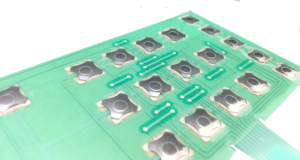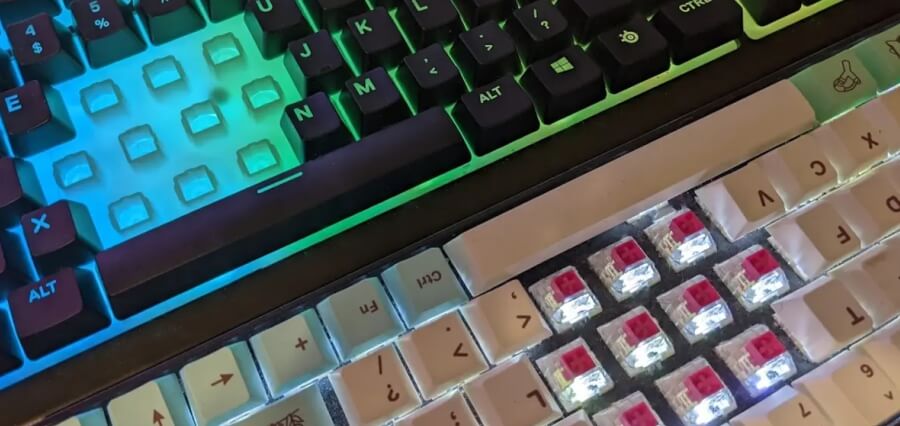Why Picking the Right Membrane Switch Is Important for Your Item Style
Why Picking the Right Membrane Switch Is Important for Your Item Style
Blog Article
Understanding the Capability of Membrane Layer Switches Over for Interface Instruments
The performance of membrane layer changes stands for a substantial advancement in customer interface design, combining efficiency with aesthetic convenience. As sectors significantly prioritize individual experience, recognizing the nuances of membrane layer switch modern technology becomes crucial.
What Are Membrane Buttons?
Membrane switches are cutting-edge interface gadgets that facilitate individual interaction with electronic tools. These functional elements contain several layers, consisting of a graphic overlay, spacer, and a printed circuit layer. The style allows for a smooth assimilation into various digital devices, boosting both the aesthetic and functional facets of interface.
Membrane layer buttons are frequently employed in a wide variety of applications, from home appliances to industrial machinery and clinical devices. Their construction normally includes a slim account, making them an ideal selection for compact styles. The responsive feedback provided by these switches can be crafted to satisfy particular individual choices, making certain effective communication between the customer and the gadget.
Sturdiness is an additional substantial benefit of membrane layer switches, as they are resistant to dust, dampness, and chemicals, which enhances their lifespan popular atmospheres. In addition, these buttons can be customized in regards to shape, dimension, and graphic style, permitting branding and user-specific attributes. Generally, membrane layer changes represent a practical remedy for boosting user experience in electronic devices, integrating performance with visual appeal in an effective fashion.
Just How Membrane Switches Over Work
Operating on an uncomplicated concept, membrane switches over make use of a layered building to register individual input successfully. Each switch is composed of numerous layers, including a published circuit layer, a spacer layer, and a top graphic layer, which are made to collaborate flawlessly. When a user presses the leading layer, it compresses the spacer layer, bringing the conductive components of the circuit layer into call with each other.
This call creates a closed circuit, signaling the tool to perform a details feature. The layout enables various arrangements, including tactile responses, which can enhance the individual experience by providing a physical sensation upon activation. The materials made use of in membrane switches often consist of versatile substrates, such as polyester or polycarbonate, which make sure durability and resilience against wear and tear.

Trick Benefits of Membrane Buttons

One more substantial benefit is their density. Membrane switches are slim and lightweight, which enables producers to conserve room in their tools without compromising functionality. This attribute is particularly useful in applications where weight and volume are essential considerations.
Additionally, membrane layer buttons are resistant to dust, moisture, and chemicals, improving their resilience. This strength prolongs their life expectancy and reduces the requirement for constant substitutes, resulting in price savings gradually.
In addition, the responsive responses supplied by membrane switches can be maximized important link to enhance individual communication. They can consist of functions such as raised buttons or audible clicks, boosting use and individual experience.
Applications Across Industries
Interface devices utilizing membrane layer switches prevail in a large selection of markets, showcasing their versatility and capability. Membrane Switch. In the clinical sector, membrane switches are indispensable to devices such as diagnostic equipment and person tracking systems, where their longevity and convenience of cleansing are crucial for maintaining hygiene requirements. In the automotive market, these switches are employed in control panel controls and infotainment systems, giving a sleek and modern user interface for customers.
Furthermore, the customer electronic devices sector advantages from membrane layer buttons in home appliances and handheld gadgets, where compact design and straightforward interfaces enhance user experience. Industrial applications additionally utilize membrane switches for control panels in equipment and automation systems, highlighting their toughness and resistance to rough environments.
In the aerospace and defense sectors, membrane layer buttons are made use of in cabin controls and equipment, where integrity and efficiency under severe problems are paramount. Furthermore, the video gaming sector increasingly incorporates membrane layer buttons in controllers and game makers, adding to an interesting user experience. Generally, the flexibility of membrane switches allows their prevalent usage across countless markets, underscoring their value in modern interface style.
Future Fads in Membrane Layer Switch Modern Technology

Additionally, making use of sophisticated materials, such as polycarbonate and polyester movies, is expected to increase, providing enhanced sturdiness and resistance to ecological stress factors. These products contribute to the general longevity of membrane buttons, making them appropriate for harsher industrial applications.
Moreover, the consolidation of wise technology, including IoT connectivity, will certainly allow membrane layer switches to interact with various other devices and systems, promoting an extra interactive individual experience. This trend lines up with the expanding need for clever Visit Your URL gadgets across different industries, from health care to customer electronics.
Finally, personalization options are anticipated to expand, allowing producers to develop bespoke services customized to details customer needs and choices. These growths will position membrane layer buttons as crucial parts in the advancement of interface innovation.
Conclusion
To conclude, membrane changes stand for a critical development in interface technology, offering a reputable and functional solution for varied digital applications. Their split construction assists in small design, while functions such as responsive feedback read here boost user interaction. The sturdiness against ecological aspects better strengthens their energy throughout numerous sectors. As developments in material science and touch noticing technologies continue, the capability and applicability of membrane buttons are anticipated to increase, strengthening their value in contemporary digital devices.
Report this page